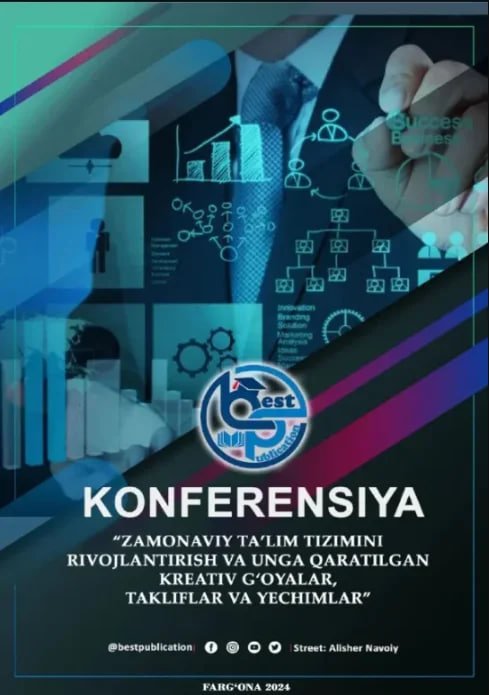THE BENEFITS OF USING INTERACTIVE TECHNOLOGIES IN THE HIGHER AND SECONDARY EDUCATION SYSTEM.
Abstract
The integration of modern technology into the secondary education system has revolutionized the teaching and learning process. This article examines the various ways in which technological tools and platforms have enhanced educational experiences, focusing on digital resources, e-learning, interactive tools, and the role of artificial intelligence. It explores the benefits, challenges, and future potential of these technologies in fostering academic achievement, skills development, and lifelong learning in secondary schools.
References
1. Anderson, C. A., & Dill, K. E. (2000). Video games and aggressive thoughts, feelings, and behavior in the laboratory and in life. Journal of Personality and Social Psychology, 78(4), 772–790. https://doi.org/10.1037/0022-3514.78.4.772
2. Bates, A. W. (2015). Teaching in a digital age: Guidelines for designing teaching and learning. Tony Bates Associates Ltd.
3. Beauchamp, G. (2012). ICT in the secondary school: Teaching, learning, and the curriculum. Routledge.
4. Cheung, A. C. K., & Slavin, R. E. (2013). The effectiveness of educational technology applications for enhancing mathematics achievement in K-12 classrooms: A meta-analysis. Educational Research Review, 9, 88–113. https://doi.org/10.1016/j.edurev.2013.01.002
5. Davis, D., & Wong, A. (2015). The use of digital technologies in secondary schools: A review of the literature. Educational Technology Research and Development, 63(6), 741-764. https://doi.org/10.1007/s11423-015-9403-9
6. Garrison, D. R., & Kanuka, H. (2004). Blended learning: Uncovering its transformative potential in higher education. The Internet and Higher Education, 7(2), 95-105. https://doi.org/10.1016/j.iheduc.2004.02.001





